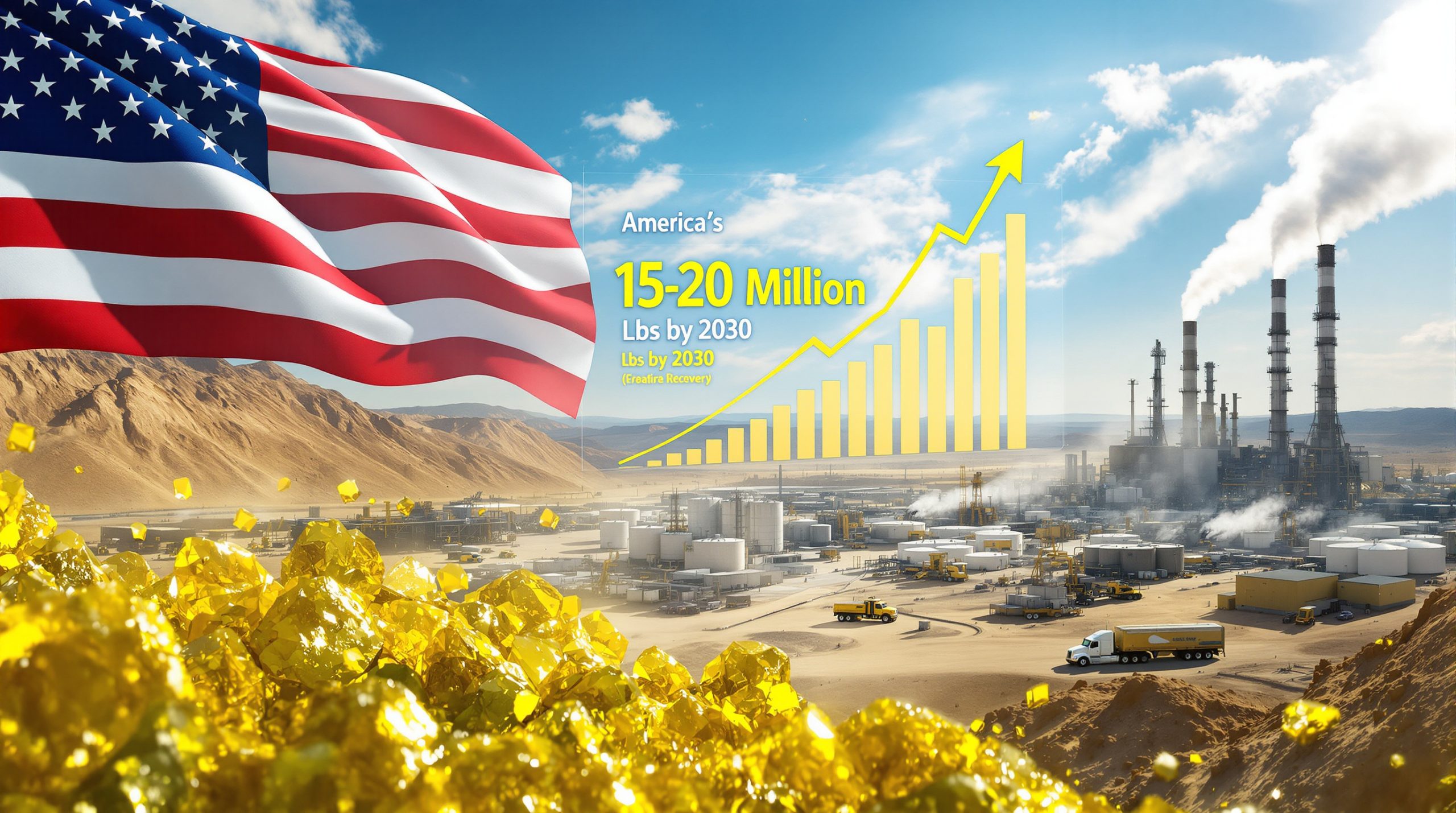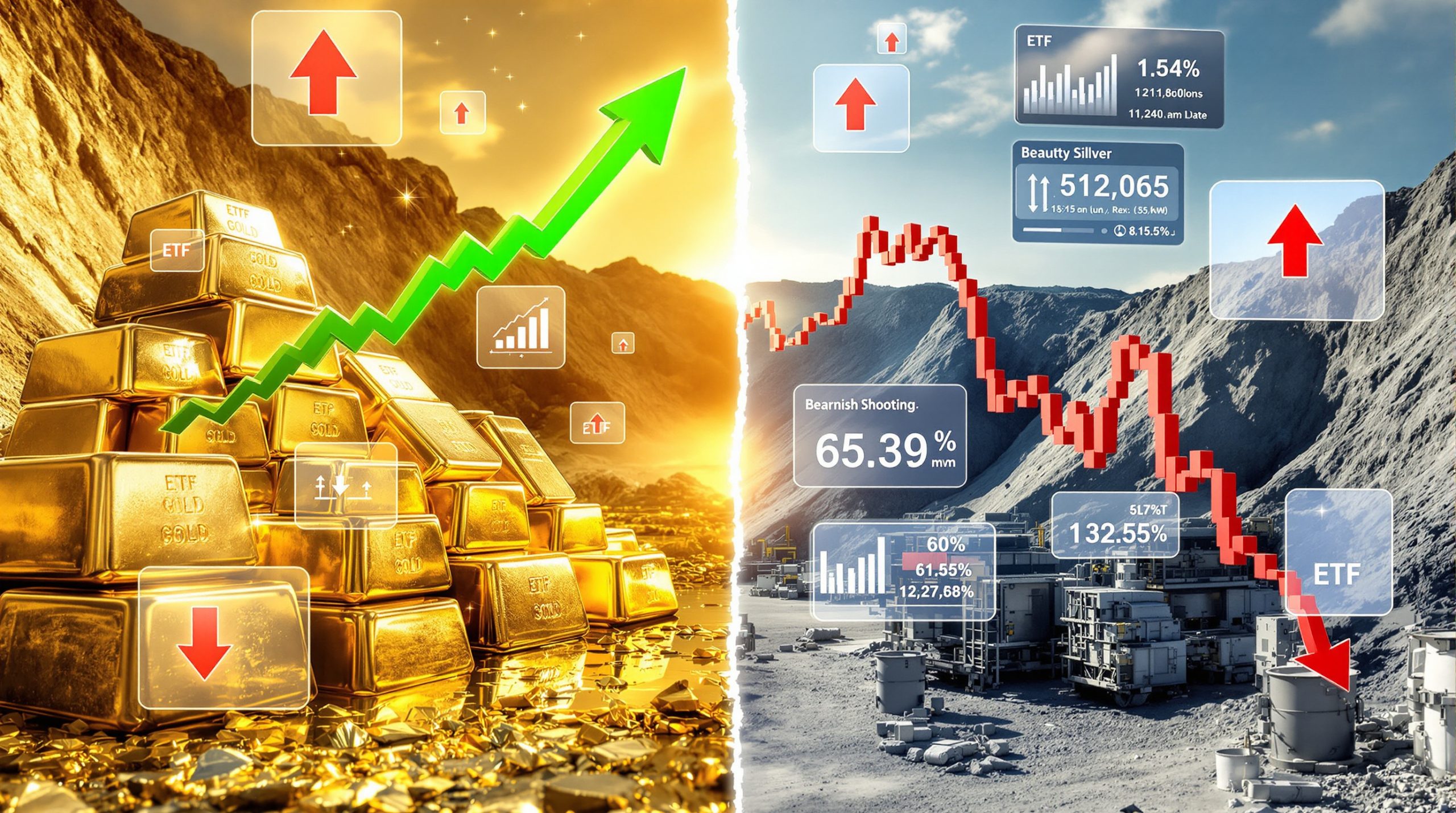Understanding Chromium Alumino-Thermic and Its Market Significance
Chromium alumino-thermic is a high-purity form of chromium manufactured through the alumino-thermic reaction process, which involves the reduction of chromium oxide using aluminum. This specialized material has gained prominence in global markets due to its exceptional properties and applications across multiple high-value industries.
The material's significance lies in its chemical purity and consistency, which directly impacts performance in critical applications. With chromium content ranging from 99% to 99.4% minimum, these materials serve as essential components in industries where material failure is not an option.
Industrial Applications Driving Demand
The demand for chromium alumino-thermic continues to grow across several key industries:
- Aerospace manufacturing: Components requiring exceptional temperature resistance and structural integrity under extreme conditions
- Specialty steel production: Creation of highly corrosion-resistant alloys for marine and chemical processing environments
- Super alloys: Critical components in turbine engines, particularly in hot sections where metals must maintain strength at elevated temperatures
- Defense industry: Specialized equipment and armaments requiring precise material specifications
- Electronics: High-performance connections and specialty components
The purity level significantly impacts performance characteristics, with the 99.4% grade commanding premium pricing due to its lower impurity profile and enhanced reliability in mission-critical applications.
Rotterdam's Evolving Chromium Market: 2025 Developments
The Rotterdam chromium market underwent significant structural changes in 2025, establishing clearer demarcation between quality grades and enhancing price transparency for market participants.
Introduction of New Price Assessment
On May 2, 2025, Fastmarkets launched a dedicated monthly price assessment (MB-CR-0003) specifically targeting chromium alumino-thermic 99.4% minimum grade in-warehouse Rotterdam. This development represents a major shift in market structure, formally recognizing the premium nature of this higher-specification material.
The new assessment was created in response to market feedback highlighting that the 99.4% material consistently trades at a premium to standard 99% grade due to its enhanced purity profile and stricter impurity controls. Prior to this change, both grades were assessed within a single price range, creating potential confusion for market participants.
Amendment to Existing Price Assessment
Simultaneous with the launch of the new assessment, Fastmarkets amended its established MB-CR-0001 chromium alumino-thermic 99% minimum assessment. This modification narrowed the scope to exclusively reflect pricing for 99% minimum material, effectively removing the price-elevating influence of premium 99.4% material from the assessment.
The dual-assessment approach creates several market benefits:
- Enhanced price accuracy: Each grade now has a dedicated assessment reflecting its true market value
- Narrower price ranges: Reduced variability within each assessment provides more precise benchmarking
- Market alignment: Assessment structure now matches actual trading patterns
- Better price discovery: Clearer visibility of premium commanded by higher-grade material
The chromium alumino-thermic in-whs Rotterdam market now benefits from improved structural clarity that better serves both buyers and sellers.
Technical Specifications: Understanding Grade Differences
The distinction between chromium alumino-thermic grades lies in their technical specifications, which directly impact performance characteristics and market valuation. These specifications include both minimum chromium content and maximum impurity levels.
99.4% Minimum Grade Specifications (MB-CR-0003)
The premium 99.4% minimum grade chromium alumino-thermic carries stricter purity requirements:
- Physical form: Available as lump or powder
- Chromium content: Minimum 99.4%
- Primary impurity controls:
- Iron (Fe): 0.35% maximum
- Aluminum (Al): 0.10% maximum
- Silicon (Si): 0.10% maximum
- Carbon (C): 0.02% maximum
- Secondary impurity limits:
- Sulfur (S): 0.01% maximum
- Phosphorus (P): 0.01% maximum
- Lead (Pb): 0.001% maximum
- Copper (Cu): 0.04% maximum
- Standardized packaging: Steel drums of uniform weight (300kg for lump, 250kg for powder)
- Assessment frequency: Monthly (first Friday between 2-3pm London time)
99% Minimum Grade Specifications (MB-CR-0001)
The standard 99% minimum grade permits marginally higher impurity levels:
- Physical form: Lump only, conforming to MMTA Chinese standards
- Chromium content: Minimum 99%
- Primary impurity controls:
- Iron (Fe): 0.4% maximum
- Silicon (Si): 0.3% maximum
- Aluminum (Al): 0.3% maximum
- Copper (Cu): 0.04% maximum
- Secondary impurity limits:
- Carbon (C): 0.02% maximum
- Sulfur (S): 0.02% maximum
- Phosphorus (P): 0.01% maximum
- Standardized packaging: Steel drums of uniform weight (typically 300kg)
- Assessment frequency: Weekly (Friday between 2-3pm London time)
Technical insight: The seemingly minor difference of a 0.4% in chromium content and tighter impurity controls significantly impacts material performance under extreme conditions. The stricter limits on Fe, Al, and Si in the 99.4% grade result in more predictable mechanical properties at elevated temperatures.
Market Changes: Rationale and Implementation
The market changes implemented in 2025 addressed several structural issues that had previously caused price distortion and confusion. Understanding these market dynamics insights is essential for anyone involved in commodity trading.
Enhancing Market Accuracy and Representation
Prior to the separation of assessments, the inclusion of 99.4% material in the 99% assessment created a persistent issue that skewed market representation. This effect was particularly pronounced at the upper end of the price range, where the premium material was pushing prices higher than typical 99% material would trade.
The separation provides multiple benefits:
- Precision pricing: Each grade now has an assessment that accurately reflects its true market value
- Statistical improvement: More homogeneous data sets produce narrower, more representative price ranges
- Market alignment: Assessment structure now matches actual trading patterns
- Premium visibility: Clearer visibility of the premium commanded by higher-grade material
Standardization to Current Market Practices
The amended 99% specification now reflects Chinese market standards as defined by the Minor Metals Trade Association (MMTA), replacing older Russian specifications that had become less relevant in current trading. This change aligns the assessment methodology with the predominant material type in the spot market.
The shift to MMTA Chinese standards represents an acknowledgment of China's growing influence in the global commodities insights and provides a more relevant benchmark for current market participants.
Consultation and Implementation Process
The changes followed Fastmarkets' standard consultation process, which included:
- Initial market feedback collection
- Formal consultation announcement
- Stakeholder comment period
- Review of industry feedback
- Final methodology publication
- Implementation of the new assessment structure
This collaborative approach ensured that the new assessment framework addressed genuine market needs while providing sufficient notice for participants to adapt their contracts and risk management strategies.
Impact on Market Participants: Commercial and Operational Considerations
The chromium alumino-thermic in-whs Rotterdam market changes create significant implications for various market participants, from producers and traders to end-users and financial institutions.
Benefits for Traders and Consumers
The new assessment structure delivers concrete advantages to market participants:
- Enhanced pricing transparency: Clear differentiation between quality grades provides better price signals
- Improved contract benchmarking: More specific reference prices for different quality grades
- Premium visibility: Better understanding of the price differential between standard and premium material
- Risk management precision: More accurate hedging capabilities based on specific material grades
These improvements translate into more efficient markets with reduced information asymmetry and more effective price discovery.
Trading Parameters and Logistical Specifications
Both assessments share certain standardized trading parameters:
- Minimum quantity: 10 tonnes (±2%)
- Location: In-warehouse Rotterdam
- Timing: Prompt release
- Payment terms: Cash (with other terms normalized to cash equivalent)
These standardized parameters ensure that price assessments reflect comparable transactions, providing a consistent benchmark for market participants.
Contract Implementation Considerations
For market participants with existing contracts, the transition period required careful management of benchmark references. Many contracts previously referencing the combined assessment needed modification to specify which of the two new assessments would serve as the relevant benchmark.
Fastmarkets provided a transition period with dual reporting to ensure market participants could adapt their contractual arrangements to the new assessment structure without disruption.
Price Assessment Methodology: Ensuring Market Integrity
The reliability of chromium alumino-thermic in-whs Rotterdam price assessments depends on robust methodology and data collection processes that ensure accuracy and market representativeness.
Data Collection and Verification
Fastmarkets employs a structured approach to price discovery that incorporates multiple data sources:
- Direct market participant submissions: Verified price data from buyers, sellers, and brokers
- Transaction data: Completed deals that meet assessment specifications
- Bids and offers: Firm market interest that demonstrates tradable levels
- Market surveys: Systematic outreach to industry participants
- Verification processes: Data triangulation and validation to ensure accuracy
This multi-layered approach ensures that assessments reflect actual tradable values rather than aspirational or theoretical prices.
Normalization and Standardization
To ensure consistency, Fastmarkets normalizes non-standard transaction terms to the specified assessment basis:
- Volume adjustments: Normalizing transactions of different sizes
- Delivery timing: Adjusting for prompt vs. forward delivery
- Payment terms: Converting credit terms to cash equivalent
- Quality variations: Accounting for minor specification differences
This normalization process ensures that the final assessment represents a consistent set of parameters, enabling meaningful price comparison over time.
Governance and Methodology Review
Fastmarkets maintains a robust governance framework for its assessment methodologies:
- Regular methodology reviews
- External auditing of assessment processes
- Formal consultation for significant changes
- Compliance with IOSCO principles for price reporting agencies
These governance mechanisms ensure that assessments remain relevant and representative of actual market conditions, adapting to evolving trading patterns when necessary.
Frequently Asked Questions: Chromium Alumino-Thermic Pricing
What specifically differentiates 99% and 99.4% chromium grades?
The key differences extend beyond the 0.4% higher chromium content. The 99.4% grade features significantly tighter impurity controls, particularly for iron (0.35% vs. 0.4%), silicon (0.10% vs. 0.3%), and aluminum (0.10% vs. 0.3%). These stricter limits result in more consistent performance in critical applications where even minor impurities can affect material properties.
Additionally, the 99.4% grade permits powder form in addition to lump, offering greater versatility for certain manufacturing processes. The combination of higher purity and tighter impurity controls makes this grade essential for applications where performance margins are narrow and failure consequences are severe.
How frequently are chromium alumino-thermic prices assessed?
The assessment frequencies differ by grade:
- The 99% grade (MB-CR-0001) undergoes weekly assessment on Fridays between 2-3pm London time
- The premium 99.4% grade (MB-CR-0003) follows a monthly assessment schedule on the first Friday of each month during the same time window
The different frequencies reflect varying liquidity levels, with the standard 99% grade typically seeing more frequent trading activity than the premium grade.
Who uses these price assessments and how?
These assessments serve multiple market functions:
- Producers: Benchmark pricing for sales strategies and production decisions
- Traders: Reference points for spot transactions and inventory valuation
- Consumers: Cost benchmarking and procurement planning
- Financial institutions: Reference rates for derivative contracts
- Analysts: Market monitoring and trend analysis
The assessments provide objective third-party reference points that can be incorporated into contracts, reducing negotiation friction and providing trusted settlement mechanisms.
How can market participants engage with the assessment process?
Market participants can become data submitters by contacting Fastmarkets' pricing team at pricing@fastmarkets.com. Contributors typically provide information on:
- Recent transactions (prices, volumes, specifications)
- Current bids and offers
- Market commentary and sentiment
- Supply/demand dynamics
All submissions undergo verification and validation to ensure data quality and prevent market manipulation. Regular participation helps ensure that assessments accurately reflect current market conditions.
Rotterdam Chromium Market: Future Outlook and Global Context
Supply Chain Evolution and Quality Differentiation
The formalization of separate price assessments for different chromium alumino-thermic grades reflects a broader trend toward increasing specialization and quality segmentation across commodity markets. As industrial applications become more demanding, the market has responded with more precise quality definitions and pricing mechanisms.
For the chromium alumino-thermic in-whs Rotterdam market specifically, this quality differentiation enables:
- More efficient allocation of material to appropriate end-uses
- Enhanced value recognition for premium production
- Better alignment of price signals with underlying quality differences
- Improved transparency for specialized applications
This evolution mirrors developments in other specialty metals markets, where increasing technical requirements have driven greater quality differentiation.
Price Transparency and Market Efficiency
The introduction of separate price assessments promotes greater market transparency and efficiency through several mechanisms:
- Reduced information asymmetry: All participants have access to clearer price signals
- More accurate valuation: Materials can be valued according to their specific quality characteristics
- Better-informed decision-making: Procurement and sales strategies can be optimized based on more precise price information
- Enhanced risk management: More specific hedging opportunities for different quality grades
These efficiency gains benefit the entire supply chain, from producers to end-users, by reducing transaction costs and improving resource allocation.
Rotterdam's Role in Global Chromium Trade
Rotterdam maintains its position as a key trading hub for chromium and other minor metals, serving as a critical nexus between production regions and European consumption centers. The port's strategic location, advanced logistics infrastructure, and established trading networks make it an ideal distribution center for specialized materials like chromium alumino-thermic.
The alignment of Rotterdam's pricing standards with MMTA Chinese specifications reflects the growing influence of Chinese production on international trade flows. This standardization facilitates smoother trade between production regions and consumption centers while ensuring consistent quality expectations.
Market insight: The Rotterdam hub's importance extends beyond physical material handling to price formation. As a key reference point for global chromium trade, Rotterdam pricing influences transactions worldwide, even for material that never physically passes through its warehouses.
Comparative Analysis: Chromium Specifications and Market Structure
The table below provides a side-by-side comparison of the key specifications for the two chromium alumino-thermic grades traded in Rotterdam:
| Specification | 99% min (MB-CR-0001) | 99.4% min (MB-CR-0003) |
|---|---|---|
| Chromium content | 99% minimum | 99.4% minimum |
| Iron (Fe) | 0.4% max | 0.35% max |
| Silicon (Si) | 0.3% max | 0.10% max |
| Aluminum (Al) | 0.3% max | 0.10% max |
| Carbon (C) | 0.02% max | 0.02% max |
| Sulfur (S) | 0.02% max | 0.01% max |
| Phosphorus (P) | 0.01% max | 0.01% max |
| Assessment frequency | Weekly | Monthly |
| Standard | MMTA Chinese | Alumino-thermic specific |
| Form | Lump only | Lump or powder |
This comparison highlights the stringent requirements for the premium 99.4% grade, particularly regarding trace elements that can impact performance in critical applications.
Conclusion: The Evolution of Specialty Metals Markets
The differentiation of chromium alumino-thermic grades in Rotterdam's price assessment framework represents a natural evolution in specialty metals markets toward greater precision in quality specification and pricing. This development benefits all market participants by providing clearer signals about the value of different material qualities.
For producers, the separate assessments provide better recognition of the value created through tighter production controls and higher purity levels. For consumers, particularly in demanding applications like aerospace and defense, the differentiation offers better price transparency for materials that meet their exacting requirements.
The chromium alumino-thermic in-whs Rotterdam market now offers a more sophisticated pricing structure that reflects the actual trading patterns and quality differentiations that exist in physical markets. This improvement in market structure should lead to more efficient resource allocation and risk management across the supply chain.
Understanding these market developments is particularly valuable for those involved in mining feasibility studies and those considering mining investments guide. Furthermore, the ongoing [mining innovation trends](https://discoveryalert.com.au/news/digital-transformation-in-mining-
Want to Discover High-Potential Mining Opportunities Before the Market Does?
Stay ahead of the curve with Discovery Alert's proprietary Discovery IQ model, providing instant notifications on significant ASX mineral discoveries and transforming complex data into actionable investment insights. Visit the Discovery Alert discoveries page to see how major mineral discoveries have generated substantial returns for early investors.




